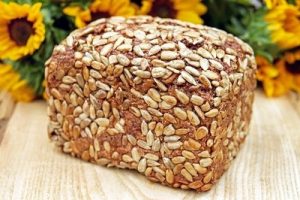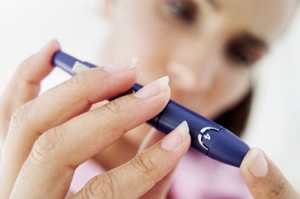Top 5 Diabetes Diet Tips for Creating Healthy Meal Plan
Diet plays a key role in regulating blood glucose. A healthy diet plan tailored to your specific needs will help you do this. Most people with diabetes are overweight or obese
Controlling your diet may be the key to reducing the risk of diabetes as well as improving your symptoms if they are affected by this disease. Maintaining a good diet is a healthy choice for everyone.
You don’t need to buy special foods for Diabetes, you just need to make healthy choices. Before you go out looking for new foods though, conduct a pantry audit to see which foods you already use and if you can make healthier choices.
 Tip # 1: Going Shopping as a Diabetic
Tip # 1: Going Shopping as a Diabetic
Be prepared when you go shopping: A shopping list will save you time and money and can help prevent impulse buying. Keep a notepad in the kitchen or a list on your smartphone and note down the items you need as you run out of them
Don’t shop if you are hungry: People who shop on an empty stomach tend to buy more – particularly things they really don’t need. Try to go shopping just after a meal.
Get to know your grocery store: Once you know the layout, write your list in categories that resemble the aisles. This keeps you out of the aisles you don’t need to visit and can eliminate unnecessary shopping time.
Buy fruit and vegetables in season: This is the smartest and cheapest way to reach your goal of eating two serves of fruit and five serves of vegetables a day.
Occasionally take your time: Every so often, take time to compare brands and investigate new products. The quietest times to shop are early in the week and late at night.
Skip that aisle: If you don’t need food from a particular aisle, don’t visit it. This applies especially to the confectionery, biscuits, pastry and soft-drink aisles.
If you are in a hurry, shop on the edges: Foods kept on the perimeter of the supermarket tend to be core foods – meats, vegetables, salads, breads and chilled items such as dairy foods and spreads.
 Tip # 2: Use the Diabetes food pyramid.
Tip # 2: Use the Diabetes food pyramid.
The Diabetes food pyramid, published by the Department of Agriculture (USDA) has six food groups (in order of what you should eat more and less carbohydrate and protein):
- Fats, sweets and Alcohol – try and avoid these as best you can. Perhaps just on rare occasions,
- Milk – 2-3 servings per day
- Meat, meat substitutes and other proteins – 4-6 oz per day divided between meals. This is equivalent to ¼ cup cottage cheese, 1 egg, 1 tablespoon peanut butter, or ½ cup of tofu.
- Fruits – 2-4 servings per day.
- Vegetables – 3-5 servings per day.
- Cereals, breads, grains and other starches – 6-11 servings per day eg…1 slice of bread, ¼ bagel, ½ and English muffin or pita bread, ¾ cup dry cereal, 1/3 cup of pasta or rice.
 Tip # 3: Balance Your Diet
Tip # 3: Balance Your Diet
What you choose to eat can be powerfully important for your health and well being. Your diet can make a huge difference to your Blood sugar levels, and also you blood pressure and cholesterol levels.
It used to be thought that a diet for controlling diabetes was all about cutting out sugar. Nowadays the nutritional recommendations focus more on weight control and a healthy eating pattern low in saturated fats and high in fiber, with a moderate intake in less refined wholegrain carbohydrate foods and of healthy fats such as those in oils and nuts.
A small amount of added sugar is not a problem, since we now know that starchy carbohydrate foods cause a greater increase in blood glucose levels than does sugar. The quality of the carbohydrate foods you choose and the type of fats you eat are important.
 Tip # 4: Food labels
Tip # 4: Food labels
Nutritional information panels on food packaging allow us to compare products of the same nature. Always check the ‘per 100g’ column. The serving size given on the label is determined by the manufacturer and in not necessarily the right one for you.

For dairy products, check the fat and saturated fat content and choose lower-fat varieties. If you do choose full-fat versions, simply eat smaller amounts. As a general rule, choose foods with less than 10 grams total fat per ‘100 grams’, but with dairy products choose foods with less than 2 grams total fat per ‘100 grams’. Aim for as low a saturated fat content as possible.

For breads, you need to check whether it is a wholegrain, and is high in fiber (more than 5 grams fiber per 100 grams.) Or has a low GI. For breakfast cereals, check the fiber content and choose higher-fiber cereals (3 grams fiber per serve).

Some cereals are higher in fat but this comes from nuts which contain healthy fats. Don’t let the fat content of these foods put you off – as they can be healthy choices in controlled amounts. Do look out for the sugar content – some breakfast cereals are very high in sugar.
 Tip # 5: A word about Sugar Substitutes
Tip # 5: A word about Sugar Substitutes
A moderate intake of sugar (10 per cent of your total daily energy needs) is acceptable in a healthy diet, but diabetic diets often include sweeteners to replace sugar in foods and beverages. There are two types of sweetener: non-nutritive (which is also referred to as ‘artificial’ or ‘intense’) and nutritive.
Non-nutritive sweeteners, such as saccharin, have a minimal or no effect on blood glucose levels, making them popular among people trying to lose weight and control their blood sugar levels. They are generally much sweeter than sugar, so you need to use much less of them
Nutritive sweeteners, still contain calories and can affect blood glucose levels. Some such as honey and fructose, should be considered as providing plentiful energy without much nutritional value.
Non-nutritive sweeteners:
Saccharin: (954) Available in table-top powder, liquid or tablet.
Aspartame : (951) Used in diet products such as sugar-free gum, soda, cordial, yogurts.
Cyclamate : (952) Not suitable for cooking
Acesulfame K : (950) Suitable for cooking – stable at high temperatures.
Sucralose : (955) Very heat stable and no aftertaste.
Steviol glycosides : (960) Heat stable – does have an aniseed aftertaste.





